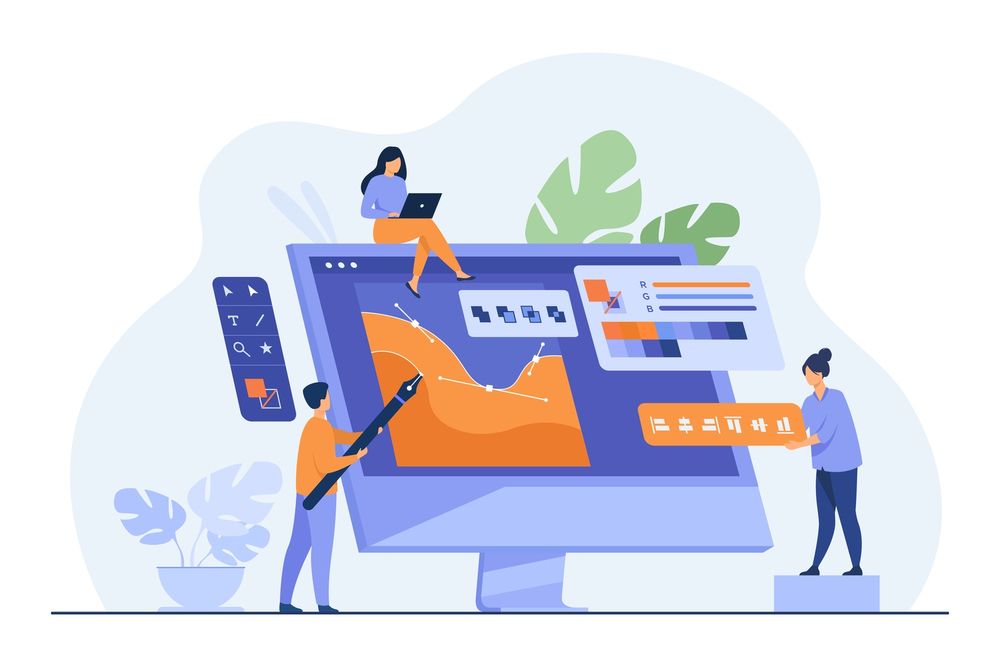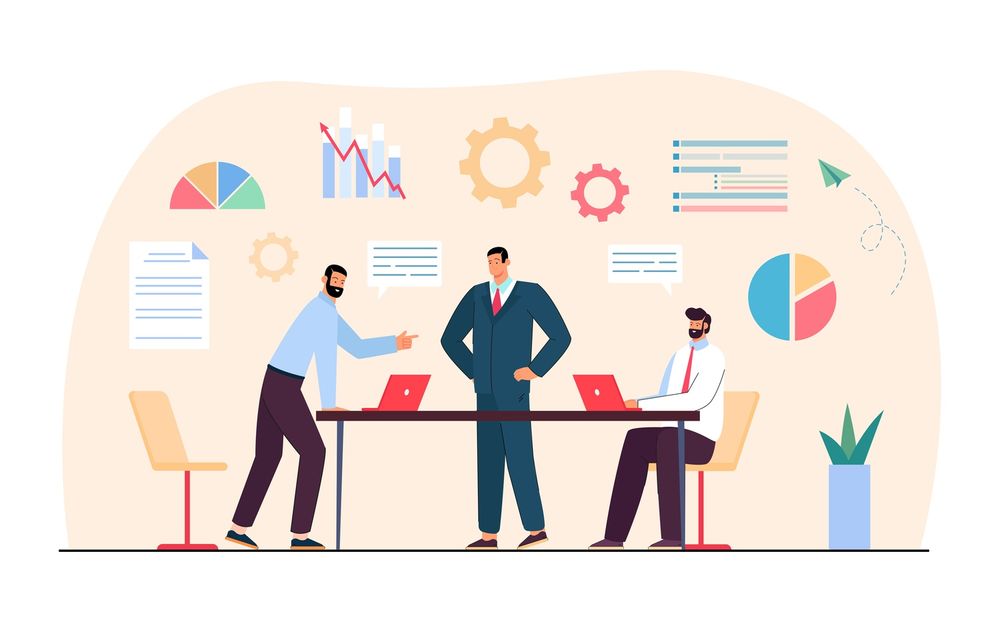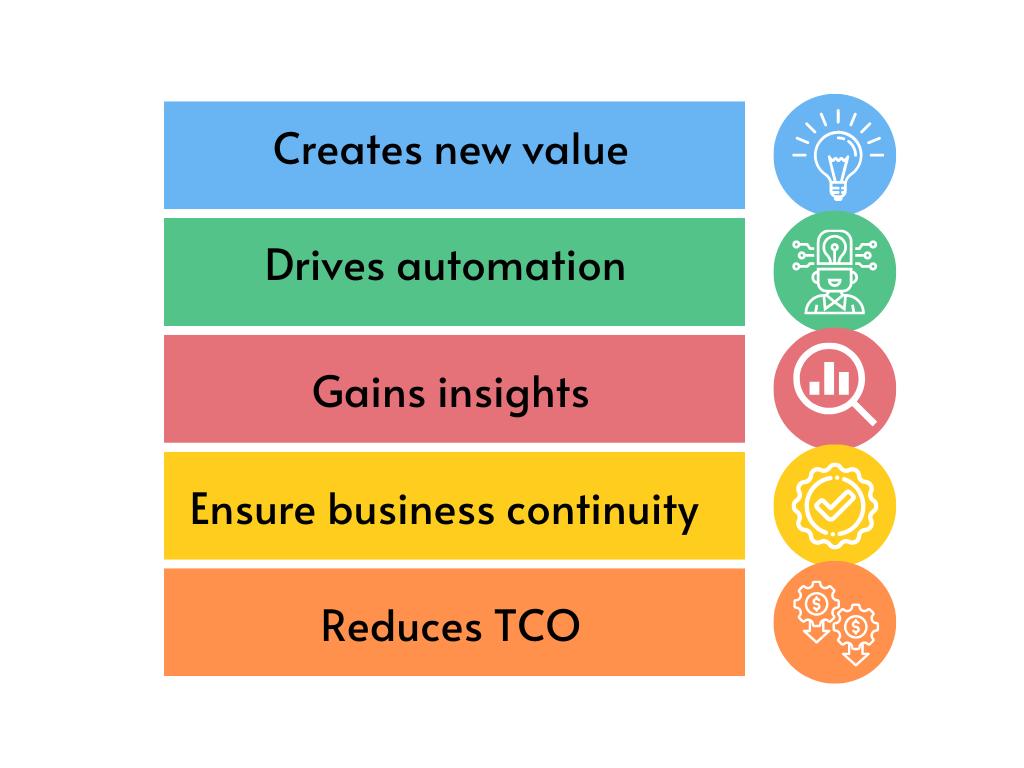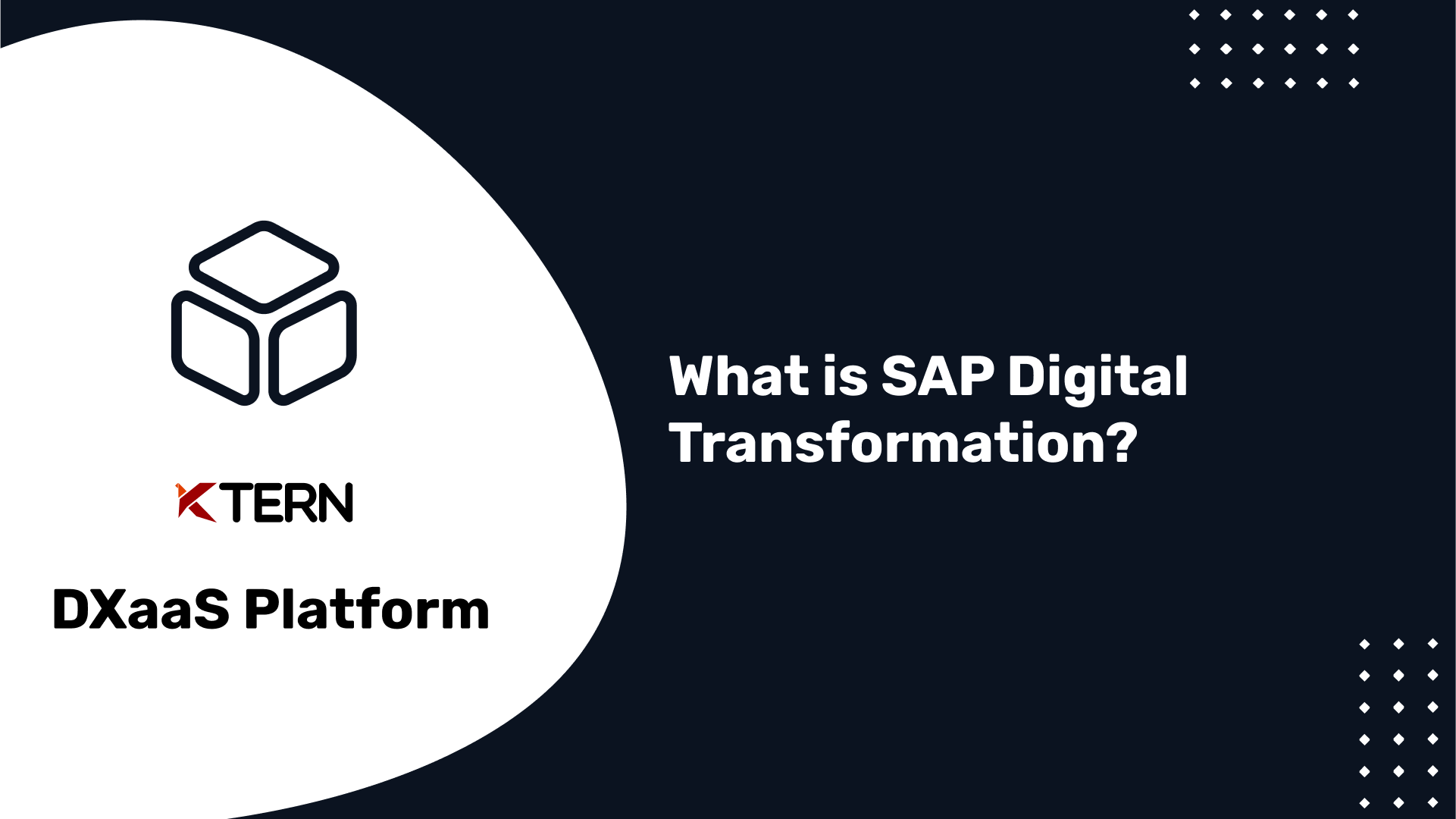What is SAP Digital Transformation
Organizations are probably already trying to respond to customer demands by offering fast, personalized and always-on services. It all comes down to digital transformation and how fast they can do it. And that, in turn, means a review of the IT infrastructure and underlying applications.
According to a research conducted by IDC, building a future-proof Digital Platform has been identified as the one of the key recipes for the success of Digital Transformation.
The digital platform comprises a number of technology building blocks, each dependent on having the right data at the right time. The platform architecture is driven by cloud, enterprise mobility, Big Data, analytics, and social media, together with innovation accelerators such as robotics, natural interfaces, 3D printing, the Internet of Things, cognitive systems, and next-generation security. Core Enterprise Resource Planning (ERP) processes still have a critical role to play, but they must be able to integrate seamlessly with these new digital technologies.
Table of contents
- Overview of SAP
- Advantages of a Digital Platform
- SAP Digital Transformation Framework
- How SAP drives Digital Transformation with its solutions?
- Digitally Transforming your organization with SAP S/4HANA
- Advantages of SAP Digital Transformation
- Next Steps
Overview of SAP
- Enterprise software is produced by SAP, a multinational software company based in Germany, to handle customer relations and corporate processes.
- Enterprise resource planning (ERP) systems from SAP are available to help businesses manage their business processes. The seamless integration of these applications will offer businesses of all sizes a complete solution.
- Companies of all sizes utilise SAP's ERP software to organise their financial, logistical, and human resource activities. The SAP Business Suite is a comprehensive collection of connected tools that aids organisations in operating more successfully and profitably.
Advantages of a Digital Platform
- Creates new revenue streams and ultimately allows the organization to become a platform company
- Allows the building of an ecosystem of partners, suppliers, and customers
- Connects and manages multiple things in the IoT ecosystem to feed data analysis capabilities
- Provides an environment to develop “net new” applications to deliver new capabilities
- Allows the development of innovation-led business logic and internally developed digital applications
- Leverages data sets from modernized core ERM, SCM, and CRM and provides the ability to trigger new business processes within these core applications
- Allows internal and external Big Data sets to be accessed and augment decision making
- Allows the business to produce new insights in real time
| Advantages of a Digital Platform |
| Creates new revenue streams |
| Allows the building of an ecosystem of partners, suppliers, and customers |
| Connects and manages multiple things in the IoT ecosystem |
| Allows internal and external Big Data sets |
| Allows the business to produce new insights in real time |
SAP Digital Transformation Framework
The SAP Digital Transformation Framework methodology provides for an end-to-end digital enterprise architecture that can digitalize business processes.
Based on a unified platform that is enterprise ready, agile, and trusted, this architecture and the next-generation business suite, SAP S/4HANA, fully integrates the front-end and back-end operations through a solid digital core.

This digital enterprise architecture dramatically simplifies the IT landscape and provides an expandable platform for future business innovation. The digital core is the hub that links your business processes to create a fluid, nimble, and live digital business that adapts to an ever-changing environment, enabling you to take the lead in the digital economy
How SAP drives Digital Transformation with its solutions?
SAP S/4HANA combines business transactions and analytics to form a reimagined digital core that connects applications and ecosystems across all the key parts of your business. Deployable on premise and in the cloud, it delivers real-time intelligent insights for enhanced decision making.
The SAP HANA platform ties into the full suite of SAP applications, both at the core with SAP S/4HANA and at the edge with our line-of-business applications.
Cost management is a top priority for every CEO and CFO, and SAP Ariba and Concur solutions digitalize spend management across materials and travel, while SAP SuccessFactors and SAP Fieldglass solutions digitalize the management of the entire employee and contingent workforce.
SAP Hybris solutions drive fourth-generation customer engagement and commerce, and the SAP Leonardo system intelligently connects people, things, and businesses. As your needs change, you can continue to innovate and evolve with SAP Cloud Platform, which provides the foundation for new application development, extensions, and integration across the SAP product portfolio.
Digitally Transforming your organization with SAP S/4HANA
SAP S/4HANA is SAP’s next-generation business suite, providing a digital core for your organization. It is a new product fully built on SAP HANA, one of the most advanced in-memory platforms today, employing modern design principles with the SAP Fiori user experience (UX).
SAP S/4HANA delivers massive simplifications in areas such as customer adoption, data model, user experience, decision making, business processes, and models. And it offers innovations for the Internet of Things (IoT), Big Data, business networks, and mobile-first to help businesses run Simple in the digital economy.

SAP S/4HANA is designed to integrate with and utilize the IoT, Big Data, mobile, business networks, third-party systems, and more. SAP S/4HANA helps our customers create a truly Live Business:
- It is immediate – empowering business users with insights to act in the moment
- It is intelligent – beyond automation to predictive suggestion
- It is integrated – not only between your departments, but connected to the world
From a business value perspective, SAP S/4HANA creates some unique opportunities to reinvent business models and drive new revenues and profits. First, enterprises can now connect to people, devices, and business networks to deliver new value to their customers on any channel because the Internet of Things and Big Data are accessible to any business.
Second, enterprises can dramatically simplify their processes, drive them in real time, and change them as needed to gain new efficiencies. And finally, business users can now get any insight on any data from anywhere in real time for planning, execution, prediction, and simulation, so decisions may be made on the fly with the finest level of granularity for faster business impact.
From an IT value perspective, this means that SAP S/4HANA creates some unique opportunities to simplify the landscape and help reduce total cost of ownership (TCO), with SAP HANA as the great simplifier.
- First, enterprises can eliminate redundant data, reducing their data footprint while working with larger data sets in one system. This enables them to reduce hardware costs, operational costs, and complexity, and to save time.
- Second, innovation is made simpler by leveraging an open platform (SAP HANA Cloud Platform) to drive advanced applications while protecting existing investments.
- Third, business users can leverage a simple and role-based user experience, based on modern design principles, which minimizes training efforts while increasing productivity as it combines information from various sources at the point where decisions are made.
Advantages of SAP Digital Transformation
- Creates new value from applications rapidly
- Drives automation, agility, and business innovation
- Gains insights and predicts outcomes
- Helps ensure business continuity
- Reduces total cost of ownership (TCO) and drive operational efficiencies

Next Steps
SAP Digital Transformation ( SAP DX) Programs need alignment, collaboration, transparency and diligent governance amongst different teams in order to achieve the intended goals. Find out more on how KTern, the SAP DXaaS Automation platform can help you in your Digital Transformation journey by getting in touch with us.




